Share this page
Empowering the dairy sector through the Livestock Environmental Assessment and Performance (LEAP) Partnership
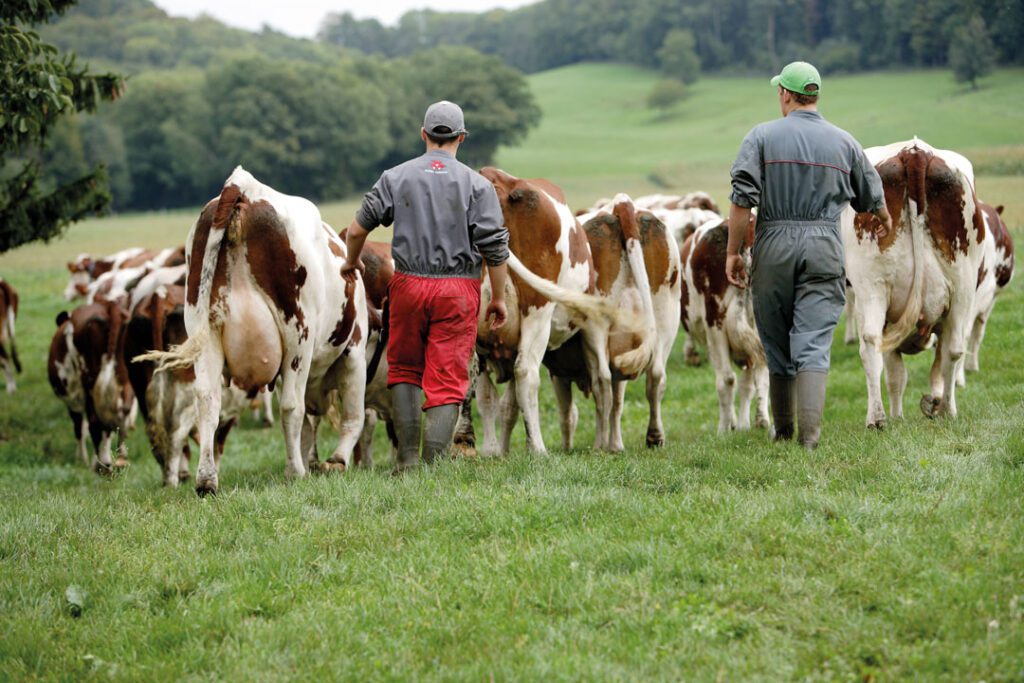

Alignment with SDGs
AUTHOR
María Sánchez Mainar International Dairy Federation
Background
The dairy sector, together with the other livestock sectors is a major contributor to food security and provide livelihoods. The increase in demand for animal products, driven by growing populations and incomes is stronger than for most other food items. Global production of milk is projected to increase from 580 to 1043 million tonnes. The bulk of the growth in milk production will occur in developing countries. Yet the sector places pressure on many ecosystems and contributes to global environmental impacts (GHG, water, biodiversity etc.) The natural resource base within which production must be accommodated is finite, so the continuing expansion of the global livestock sector will, therefore, need to be accompanied by substantial efficiency gains.
The lack of broadly recognized frameworks, including both, metrics and methods for monitoring environmental performance is however a bottleneck to effective action.
Quantitative information on key environmental impacts along livestock supply chains is required to (a) analyze food systems and inform decisions at the production and processing levels to improve environmental performance, (b) develop and evaluate corresponding policy decisions (governmental and non-governmental), and (c) inform relevant stakeholders.
What is the partnership and how does it work?
In July 2012, the LEAP Partnership was set up as a multi-stakeholder initiative that is committed to improving the environmental performance of livestock supply chains, whilst ensuring its economic and social viability. The LEAP Steering Committee is composed by 3 stakeholder groups, Governments, Private Sector, and Civil Society and Non-Governmental Organizations. The International Dairy Federation (IDF) represents the dairy sector within the cluster of Private Sectors. This Committee provides overall leadership, as well as approves the work programme of the Partnership. The Chair is rotated annually across the three groups in order to ensure equal footing in setting the agenda of the Partnership.
The Animal Production and Health Division of the Food and Agriculture Organization of the United Nations (FAO) hosts the LEAP Secretariat and ensures that the work of the LEAP Partnership is based on international best practices.
How does LEAP work?
Life-cycle thinking is a fundamental concept underpinning the work of the LEAP Partnership. This approach takes into account all of the inputs and outputs across life-cycle states.
Most of the LEAP technical activities are run by the Technical Advisory Groups (TAGs). These are special groups made up of experts from academia, the private sector, CSO and NGOs. They are formed to develop consensual guidance and methodology based on the latest scientific findings and existing recommendations.
Once drafter, LEAP technical documents are then submitted for review by external peers and LEAP Secretariat. Stakeholder consensus is then sought through consultation with the LEAP Steering Committee. Once revised, LEAP technical recommendations are submitted for a 4-5-month public review.
Despite the range of environmental assessment methods that have been developed, there is a need for comparative and standardized indicators in order to switch focus of dialogue with stakeholders from methodological issues to improvement measures.
María Sánchez Mainar Tweet
What has been the outcome of LEAP 1 and LEAP 2?
Leap 1 was largely focused on the harmonization of accounting rules for the quantification of GHG emissions from livestock supply chains (feed, small ruminants, large ruminants, poultry, pig). However, measurements of GHG emissions are partial metrics, and can lead to misleading conclusions if not placed within the proper context of the wider relationship between livestock and the environment. Environmental improvement measures solely selected on a single criterion (i.e. climate change) are likely to result in the shifting of burdens from one environmental impact category to another and poor policy choices. Thus, a biodiversity review and biodiversity guidelines were also released. The work on feed was extended to the creation of a global database of GHG emissions related to the five feed crops (barley, cassava, maize, soybeans and wheat)
Leap 2 has been focused on the development of soil carbon stock changes guidelines, nutrient cycle guidelines, water foot printing guidelines, biodiversity guidelines and feed additives or change-oriented approached guidelines. Besides technical outputs, LEAP has also developed communication tools such as e.g. a brochure, public website and visual identity of the Partnership. All LEAP products are available on the LEAP website at http://www.fao.org/partnerships/leap/en/
Some of the outputs of LEAP 1 and LEAP 2
relevant for the dairy sector are the following :
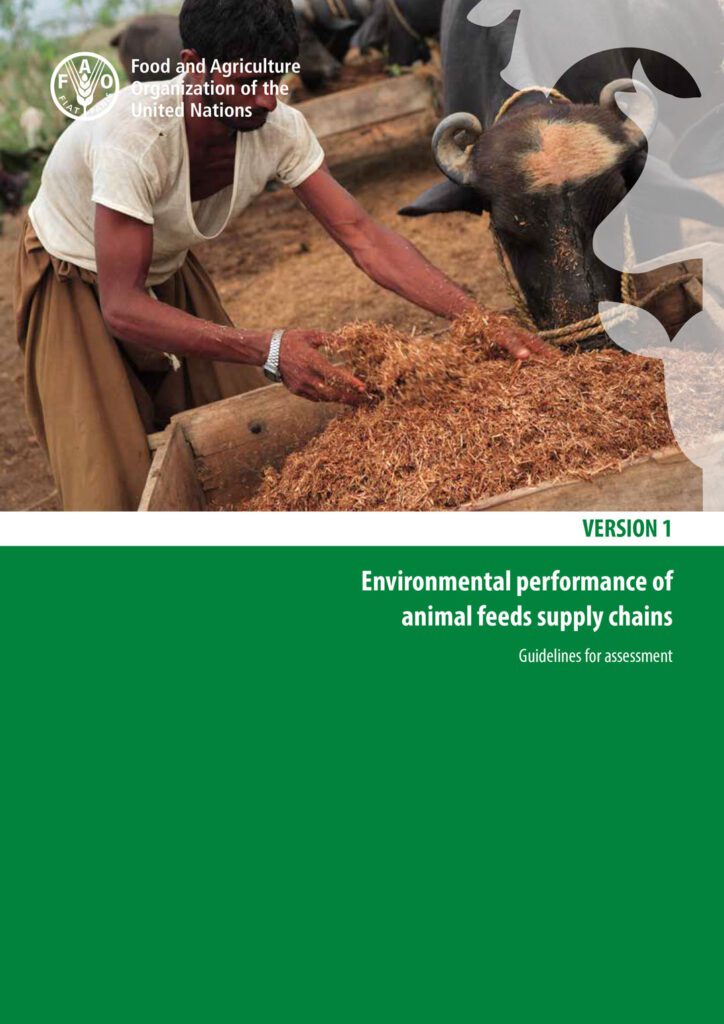

Environmental performance of animal feeds supply chains: Guidelines for assessment
Technical guidance document
Environmental assessment frameworks: LCA
Scope – Environmental accounting: GHG emissions, fossil energy use
Scope – Environmental impacts/resource use: Climate change, fossil resources depletion, acidification, eutrophication, land occupation
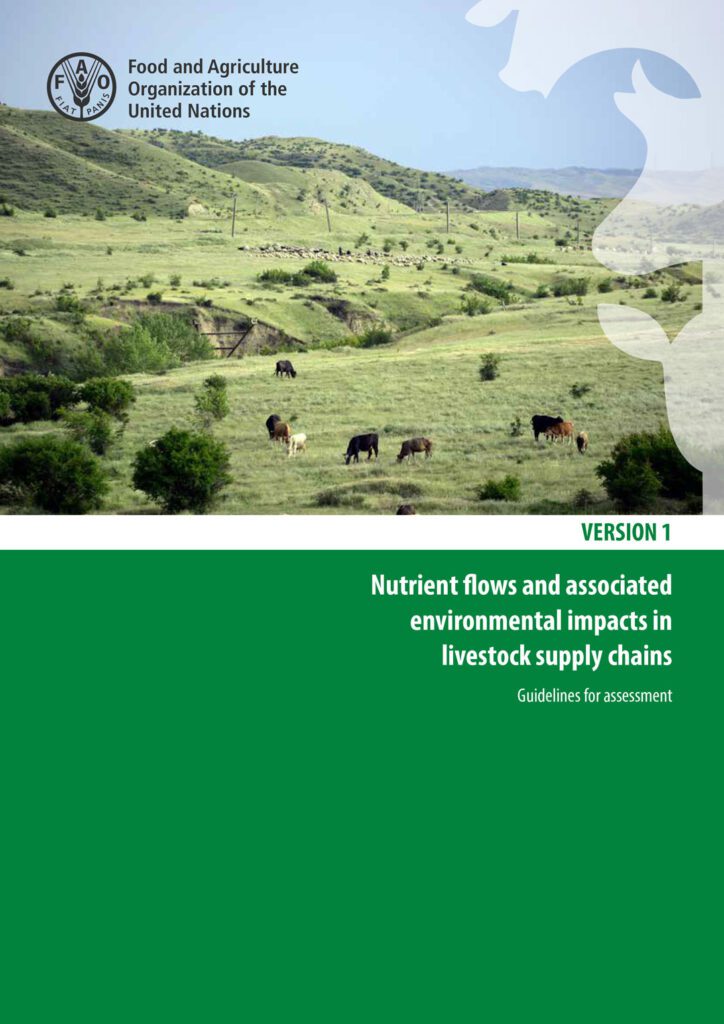

Nutrient flows and associated environmental impacts in livestock supply chains: Guidelines for assessment
Technical guidance document
Environmental assessment frameworks: LCA, resource use efficiency, nitrogen footprinting, environmental footprinting
Scope: Crops and livestock
Scope – Production systems: All.
eutrophication, land occupation
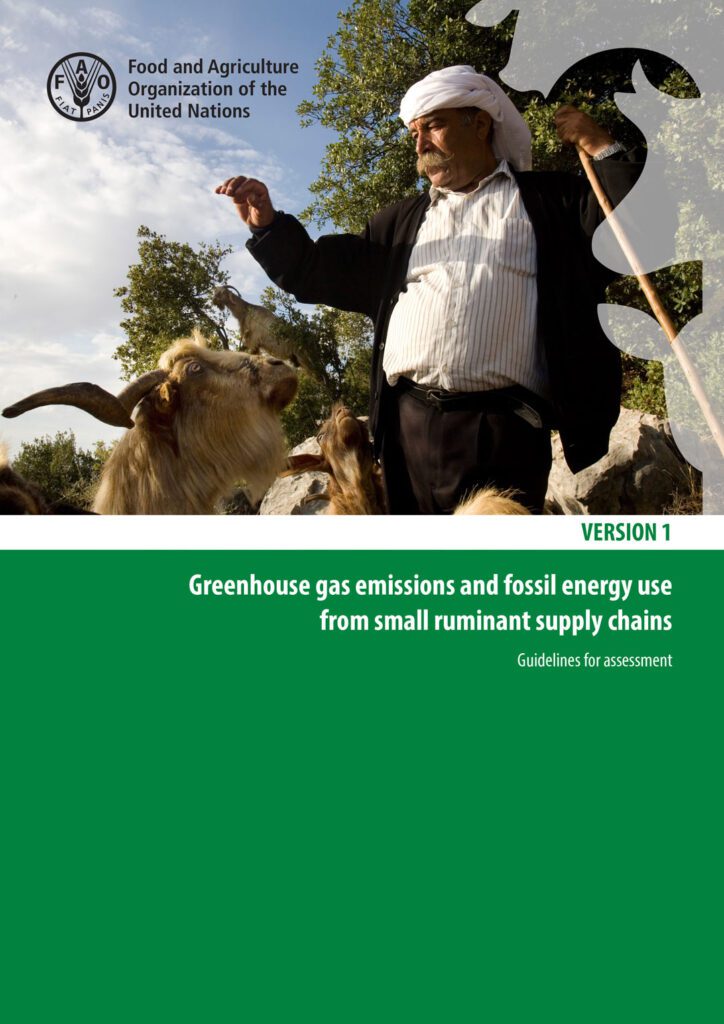

Greenhouse gas emissions and fossil energy use from Small Ruminant supply chains: Guidelines for assessment
Technical guidance document
Environmental assessment frameworks: LCA
Scope – Livestock species: Goats and sheep
Scope – Environmental accounting: GHG emissions, fossil energy use
Scope – Environmental impacts/Resource use: Climate change, fossil resources depletion
eutrophication, land occupation
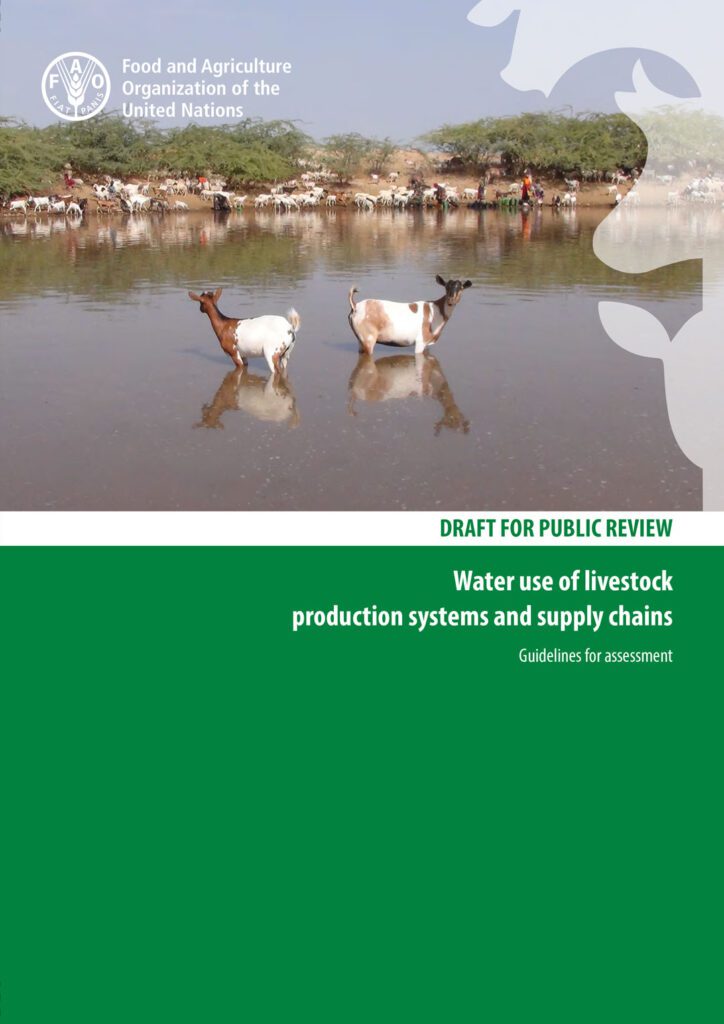

Water use of livestock production system and supply chains: Guidelines for assessment
Technical guidance document
Environmental assessment frameworks: water footprinting, LCA, resource use efficiency, water productivity
Scope: Crops and livestock
Scope – Production systems: All.
eutrophication, land occupation
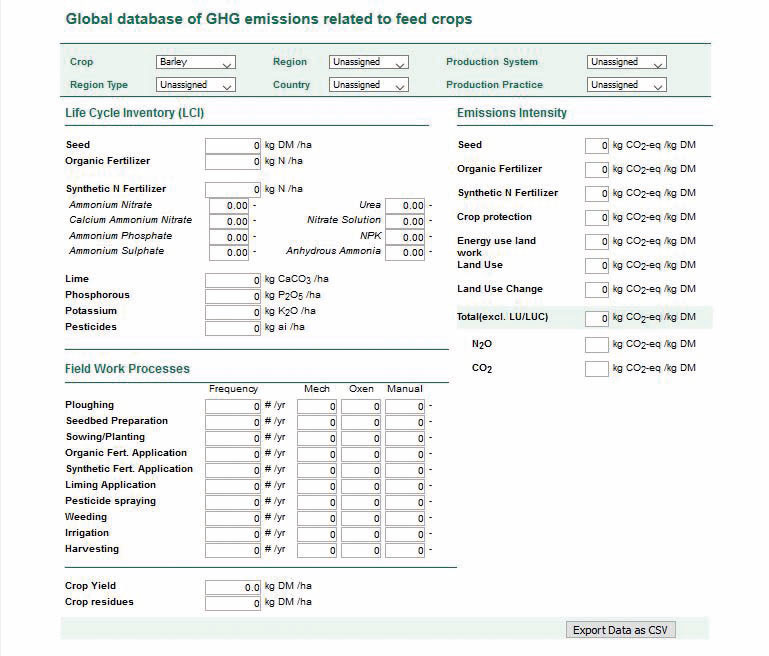

LEAP Database on Feed Crops
Technical guidance document
Environmental assessment frameworks: LCA
Scope – Feed crops: Barley, cassava, maize, soybeans and wheat
Scope – Environmental accounting: GHG emissions
eutrophication, land occupation


Measuring and modelling soil carbon stocks and stock changes in livestock production systems: Guidelines for assessment
Technical guidance document
Environmental assessment frameworks: carbon footprinting, LCA, land management
Scope – Livestock species: mostly ruminants
Scope – Production systems: Guidance was developed for grasslands and rangelands; yet, it can also be used for any type of crop production.
eutrophication, land occupation
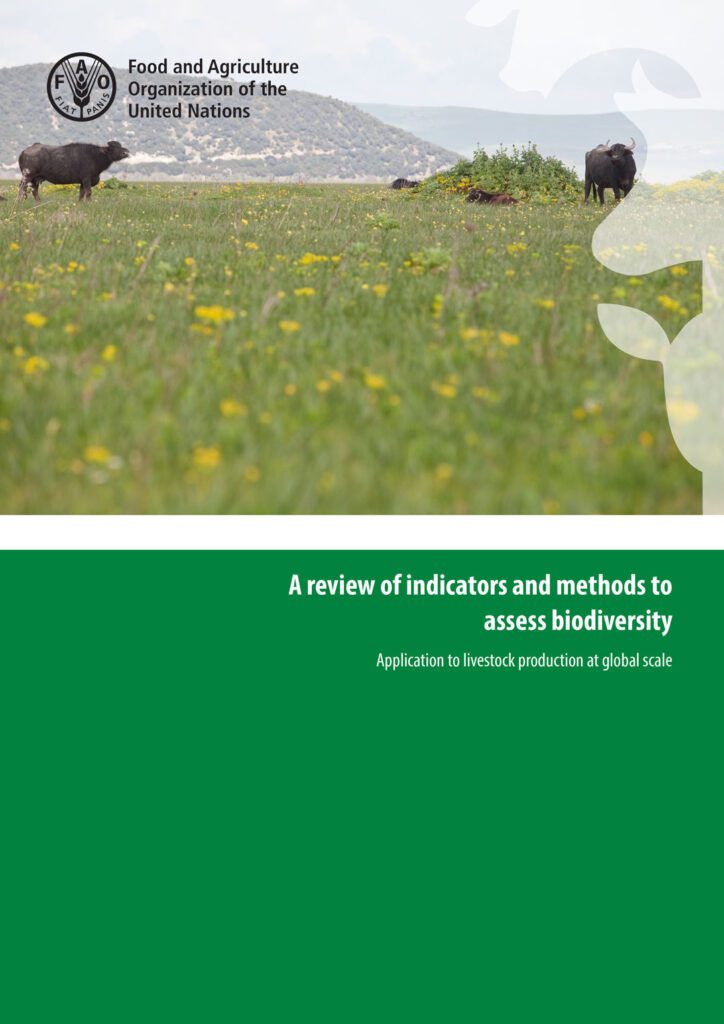

A review of indicators and methods to assess biodiversity – application to livestock production at global scale
Technical guidance document
Environmental assessment frameworks: LCA, Pressure-State-Response (PSR)
eutrophication, land occupation
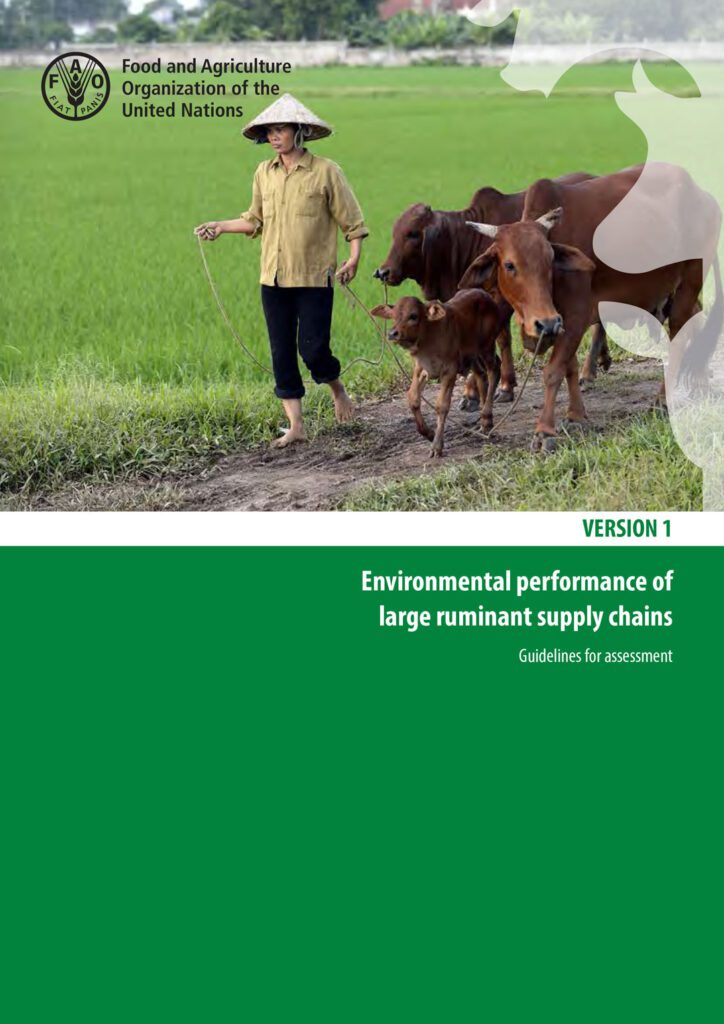

Environmental Performance of Large Ruminant Supply Chains: Guidelines for assessment
Technical guidance document
Scope – Livestock species: Cattle and buffalo
Environmental assessment frameworks: LCA
Scope – Environmental accounting: GHG emissions, fossil energy use
Scope – Environmental impacts: Climate change, fossil resources depletion, water footprint, acidification, eutrophication, land occupation, biodiversity
eutrophication, land occupation
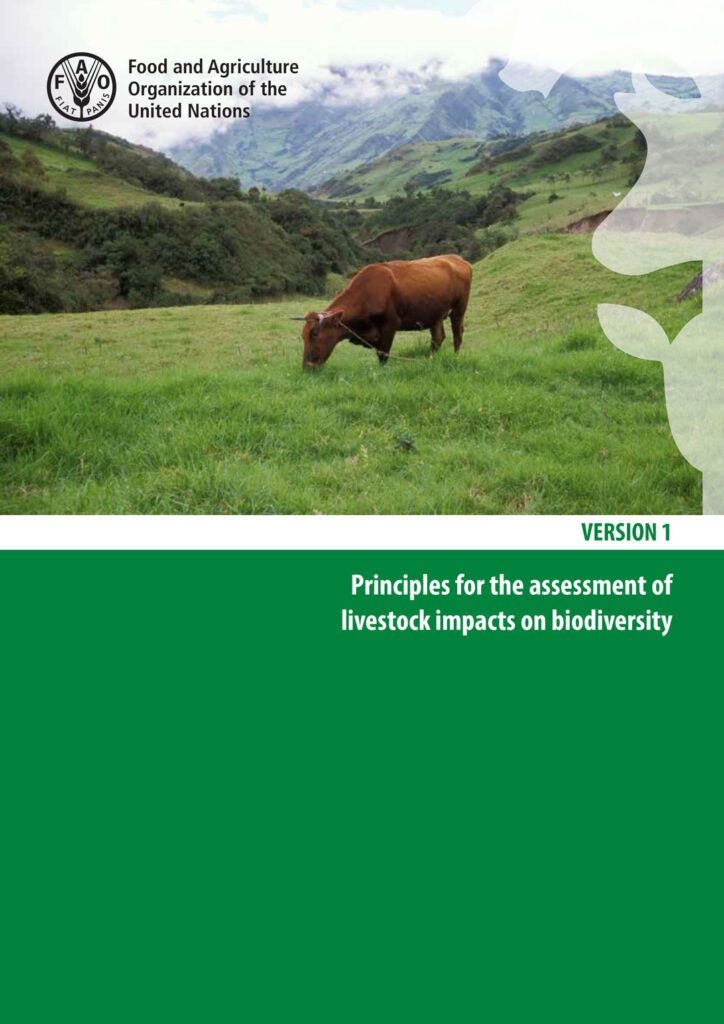

Principles for the assessment of livestock impacts on biodiversity
Technical guidance document
Environmental assessment frameworks: LCA, Pressure-State-Response (PSR)
Biodiversity and livestock production supply chains: Guidelines for quantitative assessment
Technical guidance document (under revision before external review)
Environmental assessment frameworks: LCA and PSR
Scope: Crops and livestock
Scope – Production systems: All.
eutrophication, land occupation
Environmental Performance of Feed Additive Supply Chains: Guidelines for assessment
Technical guidance document (under revision before external review)
Environmental assessment frameworks: LCA
Scope – Environmental accounting: GHG emissions, fossil energy use
Scope – Environmental impacts/resource use: Climate change, fossil resources depletion, acidification, eutrophication, water use, land occupation.
Future: LEAP3 project
LEAP work programme 2019-2021, is composed of 2 major components, namely
Road testing of LEAP guidelines
This road-testing activity will be conducted in different countries and production systems to ensure that LEAP guidelines are applicable in different contexts:
- To ensure that the guidelines are easily applicable in all situations (geographical areas, production systems, assessment scales and objectives),
- To ensure consistency in recommendations across LEAP guidelines
- To identify any methodology gap hindering application
- To facilitate adoption by all LEAP partners and stakeholders
- To mainstream LEAP guidelines into projects and into existing environmental calculators
- To build awareness and enhance the use of LEAP guidelines in various application contexts.
Development, revision and dissemination of LEAP Guidelines
LEAP guidelines developed in LEAP 1 and LEAP 2 may need to be updated based on the findings from road testing. In addition, current LEAP Guidelines have not covered all environmental dimensions. Some potential areas for additional consensus building and recommendation that have been identified are: ecosystem services, eco-toxicity, biomass carbon stocks and stock changes, and benefits from technology, feed ingredients and recovery of residues; guidelines on environmental tracking reporting. LEAP may also provide technical assistance to regional initiatives aiming at developing specific guidelines e.g. on climate-smart livestock production.
application contexts.
References
FAO (2018). Livestock Environmental Assessment and Performance Partnership http://www.fao.org/partnerships/leap/en/. Last accessed 13 December 2018






